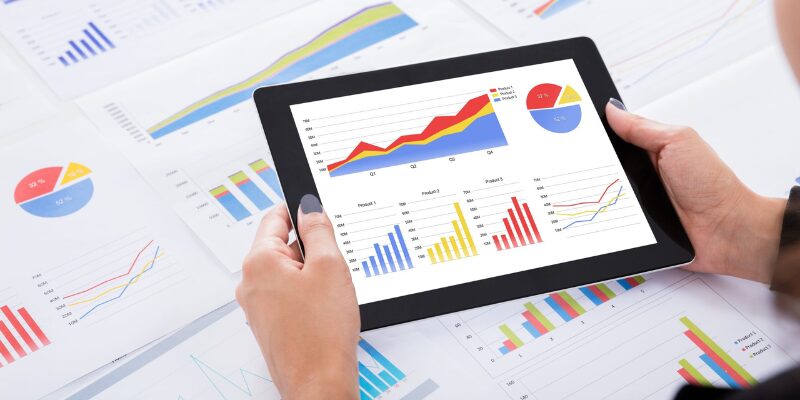
Businesses hoping to stay competitive in the contemporary digital economy must use both data analytics and business analytics. Data is the new oil. While these two roles often intersect, they are not the same. Data analysts primarily focus on gathering, cleaning, and interpreting data, while Business analysts use the information to inform strategic choices that propel company expansion.
If you’re already working in data analytics and considering a shift toward business analytics, you’re not alone. Many professionals view this as a natural progression that moves them closer to business strategy, decision-making, and leadership. The main distinctions between the two positions will be covered in this article, along with the actions you may take to ensure a smooth transition.
Understanding the Difference
Before diving into the transition process, it’s essential to understand the differences between data analytics and business analytics.
Data Analytics
Data analytics involves collecting, processing, and analyzing raw data to find patterns, trends, and insights. Professionals in this role are highly technical and work closely with top data analytics tools, including SQL, Python, R, Tableau, and Excel.
Business Analytics
Business analytics takes the findings from data analytics and applies them to solve business problems. It focuses more on interpreting data in a business context, identifying opportunities, streamlining operations, and improving ROI. Business analysts often bridge the gap between the technical team and stakeholders.
In short:
- Data Analyst = What happened?
- Business Analyst = What should we do next?
Why Transition from Data Analytics to Business Analytics?
Making the shift from data to business analytics can significantly broaden your career prospects. Here’s why professionals make the leap:
- Strategic Impact: Business analysts work closely with leadership to influence decisions that shape company strategy.
- Broader Scope: You’ll move beyond reports and dashboards to solving complex business problems.
- Career Advancement: The role often serves as a stepping stone to managerial and leadership positions.
- Client Interaction: You’ll interact more with stakeholders, which enhances communication and problem-solving skills.
With the growth of data analytics in e-commerce and other digital sectors, organizations now require business analysts who understand not just numbers but also the market implications behind them.
Step-by-Step Guide to Transition
1. Strengthen Your Business Acumen
Start learning more about the industry you work in whether it’s retail, finance, healthcare, or tech. Understanding KPIs, market trends, and customer behavior will make your data insights more valuable.
You can:
- Read business case studies.
- Attend webinars and industry conferences.
- Enroll in business-focused courses (marketing, operations, finance).
2. Learn Core Business Analytics Tools
While you might already be proficient in data tools, add tools that are frequently used in business analytics:
- Microsoft Excel (for financial modeling)
- Power BI or Tableau (for interactive dashboards)
- CRM platforms like Salesforce
- Business Intelligence tools
Also, explore basic ERP (Enterprise Resource Planning) systems to understand how data flows through business processes.
3. Develop Communication & Storytelling Skills
One of the biggest differences between the two roles is communication. As a business analyst, you’ll need to:
- Translate data into actionable insights.
- Present findings in meetings and reports.
- Communicate with non-technical stakeholders.
Practice simplifying complex ideas, using storytelling techniques, and visualizing data for clarity skills you can sharpen through hands-on sessions at the Best Training Institute in Chennai.
4. Get Certified
Certifications can bridge the knowledge gap and boost credibility. Consider:
- Certified Business Analysis Professional (CBAP)
- PMI Professional in Business Analysis (PMI-PBA)
- Business Analytics Certification from reputed institutions
These programs often combine technical, strategic, and soft skills, perfect for someone transitioning from data analytics.
5. Take On Hybrid Projects
Seek opportunities within your current role where you can apply business analysis. Examples include:
- Working with product or marketing teams.
- Joining cross-functional meetings.
- Creating business cases for a data-driven recommendation.
These hybrid projects will serve as real-world proof of your ability to think like a business analyst.
6. Expand Your Network
Connect with professionals in business analytics through LinkedIn, local meetups, or seminars. Gaining insight from their experiences might help you on your path.
Also, consider mentorship. A mentor already working in business analytics can help you identify blind spots, improve your portfolio, and guide your transition.
Educational Support for the Transition
Education is a powerful enabler when making a career shift. By choosing a practical, project-driven Business Analytics Course in Chennai, you can accelerate your learning curve.
You’ll learn:
- Real-world case studies
- Hands-on projects
- Industry-relevant tools
- Domain-specific insights (like finance, marketing, etc.)
This structured learning approach accelerates your transition and prepares you for both interviews and real-time challenges.
Common Challenges and How to Overcome Them
Challenge 1: Letting Go of Technical Comfort Zones
Solution: Don’t abandon your technical skills integrate them into your business logic. Your analytical background is a strength.
Challenge 2: Understanding Business Jargon
Solution: Read business blogs, annual reports, and follow industry leaders to build fluency in business language.
Challenge 3: Proving Yourself in Business Discussions
Solution: Practice through business case studies and collaborative team projects often provided in a good Data Analytics Course in Chennai or a business-focused curriculum.
Transitioning from data analytics to business analytics is a natural and rewarding career move for those who want to move closer to business decision-making and strategy. By developing your business acumen, enhancing your communication skills, and acquiring the necessary tools and certifications, you can successfully make the transition.
Remember, your technical background gives you an edge. When you combine it with business knowledge, you’ll become a useful tool that can help close the gap between data and judgment.





